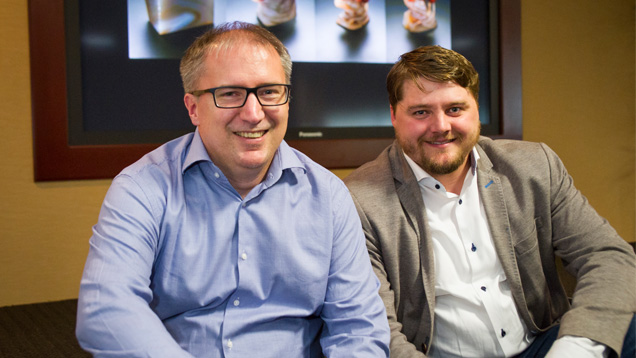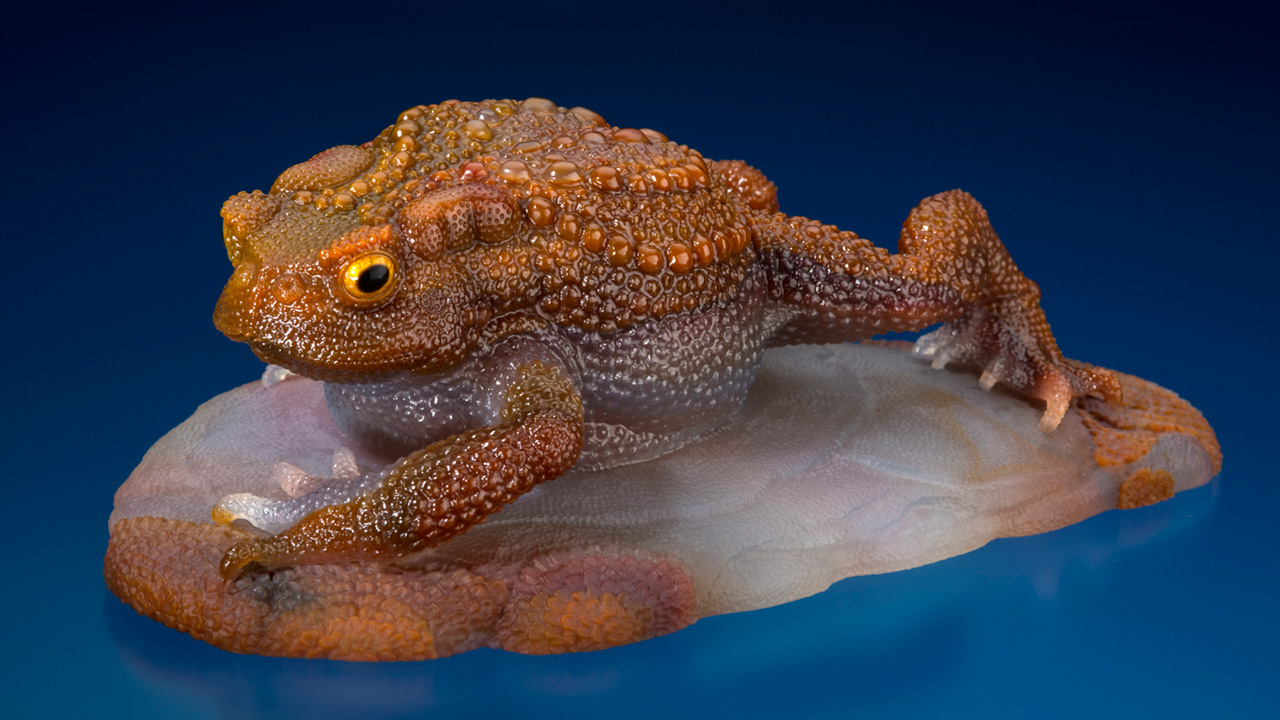Gem Carver Captures True Nature of Animals
April 2, 2015
A piece of strawberry quartz is really a starfish. Jasper is a toad. Smoky quartz is a mouse.
At least, that’s what they become.
Dreher – a fifth-generation gem carver from Idar-Oberstein, Germany – shared how he transforms rough stones into intricate lifelike animal carvings with students at GIA’s campus in Carlsbad, California. He also described his family’s history in one of the world’s major cutting and carving centers.
Dreher began his presentation with an overview of the 600-year gemstone carving tradition in Idar-Oberstein and briefly discussed his family’s work for design house Fabergé.
“It’s very important in Idar-Oberstein to have a long family legacy,” Dreher said. The Dreher family is one of the oldest gem-carving families, he said. “We are five generations – I learned from my father, he learned from his father, and his father.”
Dreher specializes in carving his animal figures from one stone, rather than as a piece of composite work, in which different stones are used in the same piece. He has carved the same animals many times, he said, but each time the position, color or expression is different. Many of the gems he uses have different colors throughout the stone so he works slowly and follows the colors. “You can’t see through the stone so you don’t know what is beneath,” he said.
Dreher uses a spindle and other tools so he can move the stone fluidly and comfortably with his hands as he carves. He shared photos of rough gems and his finished work to illustrate his vision and process.
He encouraged students to ask questions at the end of his presentation. When a student asked him his favorite gem to carve, Dreher responded without hesitation: Brazilian agate. But when asked his favorite animal, he took more time to answer: the mouse, but he also likes hippos and toads.
“Mice and toads require the most carving detail,” Dreher said. “They’re really funny objects and require a lot of work.”
Students were eager to learn more about his carving process – how long it takes to carve each piece, how he creates such realistic-looking pieces and how he decides what type of animal to carve.
Dreher and his father produce about 12 to 20 carvings each year. He said there is a long waiting list for their pieces and that each can take from 100 to 400 hours to complete. He added that one of the most important parts of his work is to research the animals before he begins carving. Dreher has spent hours observing animals in person to study their physical appearance and movements. His extensive understanding of the animals helps ensure the carvings capture their true nature.
The process to determine what type of animal to carve is less scientific. Dreher said he carefully examines the shape, feel and coloring of the rough gem. But ultimately, you must listen to the gem, he said. “The stone will tell you what to make.”
Students had the opportunity to see his work on display as part of a “Generations of Mastery” museum exhibit. More than 20 carvings by Dreher and his father, Gerd Dreher, are on loan to GIA by the Larson family. Bill Larson, owner of Pala International, is a well-known collector and connoisseur of gems, minerals and carvings, and has a large collection of Dreher pieces. The family invited Dreher to visit the U.S. and was influential in organizing his appearance at GIA.
An in-depth article on the Dreher family will be published in G&G later this year.

Carl Larson, right, introduced Dreher at the student presentation. Larson’s family helped organize the event and loaned the carvings for the museum exhibit. Photo by Kevin Schumacher/GIA
About the Author
Kristin A. Aldridge, a writer at GIA, is a graduate of GIA’s Pearls and Accredited Jewelry Professional programs.






.jpg)


